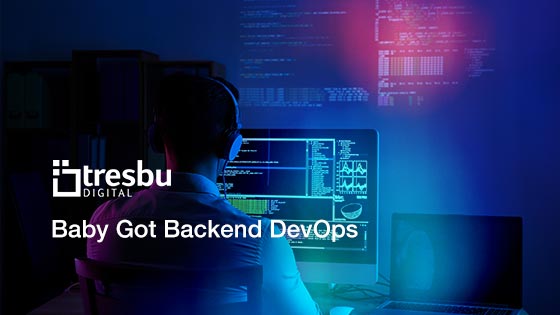In today’s world of abrupt market changes, an increasing number of companies are employing Low-Code development to support digital transformation and remain cost-competitive. If your organization wants to mitigate financial risk and stay relevant, you’ll need an effective plan for increasing responsiveness, agility, and speed to keep up with rapidly evolving markets.
This is where digital transformation comes in.
In basic terms, digital transformation is about converting from manual or analog processes to digitally native applications, thereby integrating digital technology into all aspects of business.
But what about backend application development? Can Low-Code solutions address the more complicated matters of DevOps as your company seeks to modernize IT and systems?
Yes, it can. Here’s how.
Why Digital Transformation Matters on the Backend
Sure, digital transformation seems like a daunting and painfully slow process–and if you adopt a traditional approach, it often is. But re-platforming through Low-Code lets you create more precise customizations on the backend—with speed and accuracy
When you employ Low-Code technology on the server-side, your company is better equipped to move at market speed while producing a higher-quality application.
With Siemens Mendix Low-Code, every aspect of app-building employs visual development, bypassing the need for hand coding even with complex backend systems. This frees up even the most skilled developers, allowing them to focus on design and implementation.
But what if your developers want to augment the app or make changes at any stage?
Your team can still modify an application’s backend with or without code, allowing them to dial in the processes necessary to achieve specific goals. And if you’re concerned about potential problems from these modifications, you’ll be glad to know that the Siemens Mendix Low-Code platform through Tresbu Digital offers built-in protections.
High-performance Low-Code platforms automatically check for affected dependencies, bugs, or broken code after backend modifications. This means your developers can build core systems from scratch, integrate with core ERP or CRM systems with low risk.
Backend Capabilities Streamlined Through Low-Code
What capacities can Low-Code development build on the backend? Here’s a sampling:
- Create admin panel, back office, or webpage to manage app content
- Show frequently updated data on the front end
- Sync data across user devices
- Prevent lost app data
- Receive orders and process payments
- Allow communication between app users
- Collect stats about users
- Keep users informed using in-app notifications
With Low-Code, you can create and implement these features in far less time and with a much smaller investment.
Customize Backend Logic with Low-Code Development
Siemens Mendix’s Low-Code platform won’t restrict your development team’s ability to dive into more complex server-side modifications. In fact, it only simplifies the process.
Your developers can use visual insights to review and alter specific microflows (see below) and business logic using visual language instead of code.
The most complicated aspect of backend development is customizing application logic. When you use high-productivity Low-Code, your development team can collaborate with business operations to determine how your app will operate, process, and react to data on the server-side, even down to the last detail. And it’s accomplished through efficient Low-Code technology.
Microflows Are Key to Digital Transformation
In the Siemens Mendix Low-Code platform, microflows are the visual expression of how your app will function on the backend. They make it easier to add complex business logic to your application—without code.
Together, microflows and business rules comprise server-side logic, but it’s microflows that perform actions. If you can manage your microflows, you can manage the intricacies of your backend logic and even connect to external systems or apps.
But what if your team wants the option to use code on the server-side?
More skilled developers might wish to extend microflow logic with custom code, and the Siemens Mendix platform offers that capability. It integrates with third-generation programming languages like Java, allowing your team to expand on the built-in microflow logic features and alter code as desired.
Establish a Digital Transformation Strategy with Low-Code Development
If you want to launch a successful digital transformation strategy, you’ll first need to identify strategic business challenges. Sometimes companies rush into adopting technologies before assessing capacities and long-term objectives, but this approach often fails.
In other words, plan first, and then search for the technology that most aligns with your goals. In doing so, you might find that Low-Code is the most efficient and flexible way to level up your IT, improve app quality, and convert to digital systems.
If you’re moving beyond basic Low-Code app development and are seeking to embrace more complex, agile development across your business, then contact Tresbu Digital. Our business engineers can help with business process development and offer the IT support you need as you transition from legacy systems to transformative Siemens Mendix Low-Code solutions.




